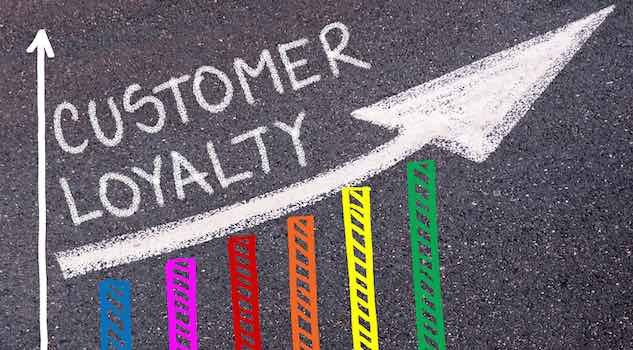Have you ever seen a billboard or heard an add that says something like “100 per cent satisfaction guarantee”? Whenever I see statements like this my first thought is as opposed to what, 80 per cent? Customer satisfaction is no longer an adequate measurement strategy to ensure you have loyalty. It’s one of the key factors as to why so many businesses are caught in a price trap and have to discount.
Delivering customer satisfaction is basically giving people what they paid for and any experience is mostly a head connection, things like; efficiency, having stock, and a good price. There is a real problem in Australia with a mindset and attitude of complacency around service. Think about how often you are wowed by your purchasing experiences. If you consider all of your own personal transactions, you’ll discover its only about 15 per cent that go way beyond your expectations and provide an excellent experience. This is where the golden opportunity of optimising loyalty is hidden.
The powerful distinction of customer appreciation
Think of the people in your life that you really care about. Whenever you do there is a strong heart connection to them. Business can be the same – if you think about the businesses you are truly loyal to, you will find that it’s not because you got what you paid for, it’s because you got a lot more. It’s usually because of the relationship you have with them and how they make you feel when you connect.
Customer appreciation is a very powerful and profitable currency. It’s rarely understood and grossly under leveraged in business. It’s without doubt one if the biggest weapons a business has against its competitors. The challenge is how to define customer appreciation in the culture of your business.
It’s effectively impossible to have extremely high customer loyalty with an average team culture. Most companies do not place a high enough importance on the relationship between team culture and customer experience. Having customer appreciation as the objective instead of merely delivering customer satisfaction will have a massive impact on your bottom line.
The four steps to revenue
In a competitive market there are four specific categories that define and create revenue. They are critical to master and manage if you want to build powerful ambassadors to your business and maximise margins. If you are only delivering the basics of customer satisfaction your primary focus will be about price. However, if you deliver very high levels of customer appreciation then the experience is the currency and it’s about value.
- Lead generation: Your marketing strategies are designed to bring potential customers into contact with your business and ideally attract the ideal prospect. The most effective lead-generation strategy has always been, and still is, referrals from loyal customers who know what they want and want to deal with you.
- Conversion rate: The fastest way to increase revenue is to increase conversion rates with prospective and existing customers. Powerful referrals deliver the most effective and profitable conversion rates as they are the best possible prospect.
- The number of transactions: Successful businesses have a high focus on having repeat customers as they know they are more profitable, especially as ambassadors value experience over price and reward you with maximum wallet share. Just think of who you are loyal to and how you choose them first every time. If you don’t have loyalty you have to be price competitive to get customers back and this costs margin. Satisfaction is based on price whereas appreciation is based on experience and value.
- Average sale value: Customer satisfaction has your market buy the basics of what they need from you. Customer appreciation earns you the right to have them buy what they also want. Appreciative customers spend considerably more (often double) than satisfied customers. If you focus on delivering appreciation from service excellence you will be rewarded with higher sale values.
Customer satisfaction is a price driven economy, a very fragile and unforgiving market place to operate in. Customer appreciation is a value driven economy, a very secure and predictable space from customers who genuinely want you to succeed as they want you to be there for them in the future.
Darrell Hardidge, CEO Saguity, and author of “The client revolution and the 10 commandments of client appreciation”















